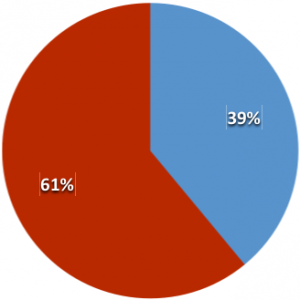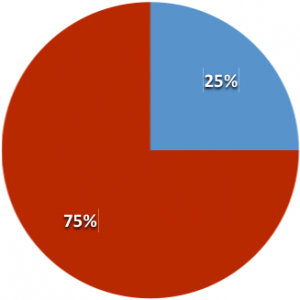BLOG / POSTS
Into Which Languages Should I Localize My Mobile App
In January we wrote a blog entitled iOS App Localization - Why and Where? giving advice on what language regions to localize your iOS app into, to maximize your market reach. We have had numerous requests to update this data and to expand it to other platforms, so here it is…
Xyologic’s January figures for mobile app downloads reports on over 1.9 million apps and more than 500,000 publishers. We have used this source data to estimate market size by language rather than country. We then removed the English language market as most apps are written and first published in that language. This results in a platform-by-platform data on the relative size of the language markets for app downloads.
Before we analyze these non-English markets, let’s take a quick look at the actual market reach you can achieve as an app developer by leaving your app in English only. It might surprise you to discover that English is no longer the unanimous language of the mobile app user. Consider the table below; we estimate that native English speakers account for only 34% , 39%, and 25% of iOS, Android, and Windows Phone downloads, respectively.
 iOS iOS |
 Android Android |
 Windows Windows |
 |
 |
 |
| Non-English English | ||
The vast majority of mobile app downloads are to non-native English speakers, and this is the case across each of the 3 main platforms. So, how does the mobile app developer best address this non-English market? Is it fully fragmented, or are there any low hanging fruit?
If we examine the non-English markets across each platform by concentrating on the top 8 languages we can map these markets as shown in the table below.
 iOS iOS |
 Android Android |
 Windows Windows |

|
Chinese (Si.) | 38.8% | 
|
Korean | 18.0% | 
|
Chinese (Si.) | 27.8% |

|
Japanese | 13.5% | 
|
Spanish | 17.8% | 
|
Spanish | 13.9% |

|
Spanish | 8.4% | 
|
Russian | 10.9% | 
|
Italian | 10.7% |

|
German | 6.4% | 
|
German | 9.5% | 
|
Russian | 10.0% |

|
Korean | 5.7% | 
|
Japanese | 8.0% | 
|
Portuguese (Br.) | 6.1% |

|
French | 5.7% | 
|
French | 5.3% | 
|
German | 5.7% |

|
Russian | 5.3% | 
|
Portuguese (Br.) | 5.2% | 
|
French | 4.8% |

|
Italian | 4.3% | 
|
Italian | 4.8% | 
|
Polish | 3.8% |
Each of the 3 main platforms has its own unique profile, yet they all exhibit similar long tail effects with the majority of the market share going to a relatively small number of language regions. This is good news in terms of cost and maintenance of localized versions.
 iOS
iOS
Only two language localizations are required to make your app addressable to over 50% of the non-English market. Chinese Simplified and Japanese versions of your app can net you a further 52% of your remaining market. For a more detailed breakdown of the iOS language markets please check out our iOS Knowledge Base.
 Android
Android
With Android OS, three language sets are required to get you close to 50% of your remaining market. The addition of Korean, Spanish and Russian will give you approximately 47% extra market cover. Check out our Android Knowledge Base of a more detailed breakdown on this platform.
 Windows
Windows
Only two language localizations are required for Windows Phone app developers to make their Windows Phone app addressable to over 50% of their non-English market. Chinese Simplified, Spanish, and Italian will net a further 52% of remaining market. Fur a more detailed breakdown of the Windows Phone language markets please check out our Windows Knowledge Base.
Mobile app developers should consider this data when deciding on target markets for their apps. There is no need for a spray-and-pray approach to foreign markets. Spend your localization dollar smartly, select the larger markets and maximize the reach of your product while targeting your spend. Further market targeting advice can be found here iOS App Localization, Android App Localization, Windows Phone App Localization.
- android app
- app localization
- app translation
- ios app
- mobile app
- translation languages
- windows phone app